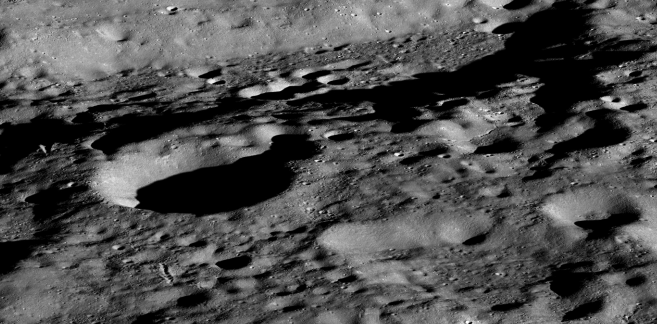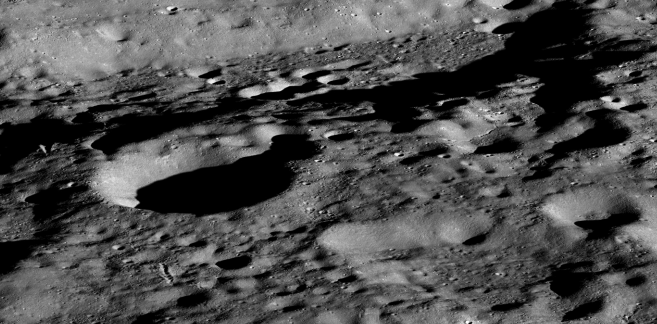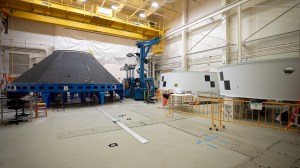2 min read
Preparations for Next Moonwalk Simulations Underway (and Underwater)  View of the Nova-C landing area near Malapert A in the South Pole region of the Moon. North is to the right. Taken by LROC (Lunar Reconnaissance Orbiter Camera) NAC (Narrow Angle Camera).NASA/GSFC/Arizona State University NASA has released two white papers associated with the agency’s Moon to Mars architecture efforts. The papers, one on lunar mobility drivers and needs, and one on lunar surface cargo, detail NASA’s latest thinking on specific areas of its lunar exploration strategy.
View of the Nova-C landing area near Malapert A in the South Pole region of the Moon. North is to the right. Taken by LROC (Lunar Reconnaissance Orbiter Camera) NAC (Narrow Angle Camera).NASA/GSFC/Arizona State University NASA has released two white papers associated with the agency’s Moon to Mars architecture efforts. The papers, one on lunar mobility drivers and needs, and one on lunar surface cargo, detail NASA’s latest thinking on specific areas of its lunar exploration strategy.
While NASA has established a yearly cadence of releasing new documents associated with its Moon to Mars architecture, the agency occasionally releases mid-cycle findings to share essential information in areas of interest for its stakeholders.
“Lunar Mobility Drivers and Needs” discusses the need to move cargo and assets on the lunar surface, from landing sites to points of use, and some of the factors that will significantly impact mobility systems.
“Lunar Surface Cargo” analyses some of the current projected needs — and identifies current capability gaps — for the transportation of cargo to the lunar surface.
The Moon to Mars architecture approach incorporates feedback from U.S. industry, academia, international partners, and the NASA workforce. The agency typically releases a series of technical documents at the end of its annual analysis cycle, including an update of the Architecture Definition Document and white papers that elaborate on frequently raised topics.
Under NASA’s Artemis campaign, the agency will establish the foundation for long-term scientific exploration at the Moon, land the first woman, first person of color, and its first international partner astronaut on the lunar surface, and prepare for human expeditions to Mars for the benefit of all.
You can find all of NASA’s Moon to Mars architecture documents at:
https://www.nasa.gov/moontomarsarchitecture
Keep Exploring Discover Related Topics Missions



 2 min read Unity in Orbit: Astronauts Soar with Pride Aboard Station Article 3 days ago
2 min read Unity in Orbit: Astronauts Soar with Pride Aboard Station Article 3 days ago  5 min read Six Adapters for Crewed Artemis Flights Tested, Built at NASA Marshall Article 3 days ago
5 min read Six Adapters for Crewed Artemis Flights Tested, Built at NASA Marshall Article 3 days ago  5 min read Lakita Lowe: Leading Space Commercialization Innovations and Fostering STEM Engagement Article 2 weeks ago
5 min read Lakita Lowe: Leading Space Commercialization Innovations and Fostering STEM Engagement Article 2 weeks ago 


